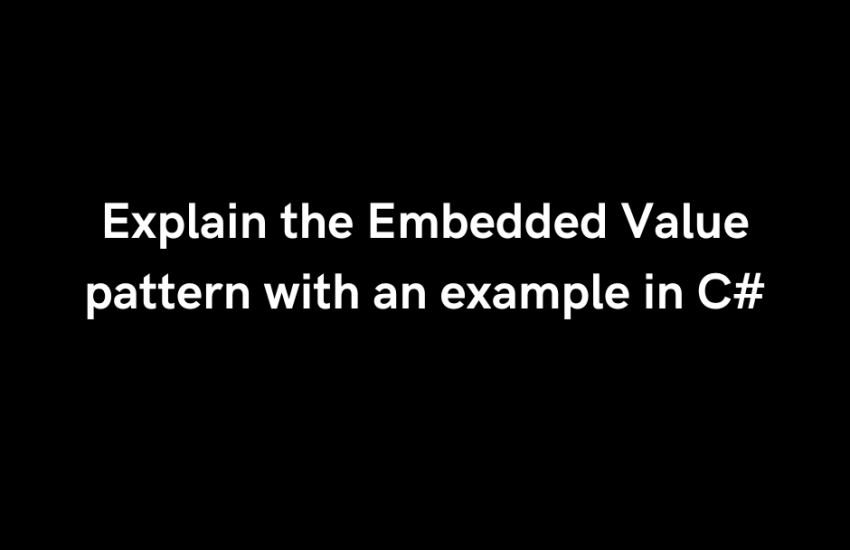The “Embedded Value” pattern is a design pattern that focuses on encapsulating or embedding a value object within another object. This can be useful when we want to treat a group of related values as a single unit, providing better organization and abstraction in our code.
Benefits of Embedded Value:
1. Encapsulation and Abstraction:
- The Embedded Value pattern encapsulates a group of related values into a single object.
- It provides a level of abstraction by treating the group of values as a cohesive unit, hiding the implementation details from the outside world.
2. Improved Readability and Maintainability:
- By creating a dedicated class (e.g., Coordinates in the below example) to represent a specific set of values, the code becomes more readable and self-explanatory.
- Maintenance is simplified because changes to the structure or behavior of the embedded values are localized to the value object.
3. Reusability:
- If a set of values is used across multiple entities or scenarios, encapsulating them in a value object allows for easy reuse without duplicating code.
4. Consistency:
- Embedding related values into a single object helps maintain consistency in their usage. For example, ensuring that latitude and longitude are always treated as a pair.
Here’s a simple example in C# to illustrate the Embedded Value pattern:
public class Location
{
public string Name { get; }
public Coordinates Coordinates { get; }
public string Description { get; }
public DateTime DateEstablished { get; }
public Location(string name, Coordinates coordinates, string description, DateTime dateEstablished)
{
Name = name;
Coordinates = coordinates;
Description = description;
DateEstablished = dateEstablished;
}
public override string ToString()
{
return $"{Name} - {Coordinates} ({Description}), Established on {DateEstablished:D}";
}
}
In this extended example, the Location class includes additional properties such as Description and DateEstablished. The Coordinates value object remains embedded, and the code remains clean and organized. This demonstrates how the Embedded Value pattern can scale to handle more complex entities without sacrificing readability and maintainability.




